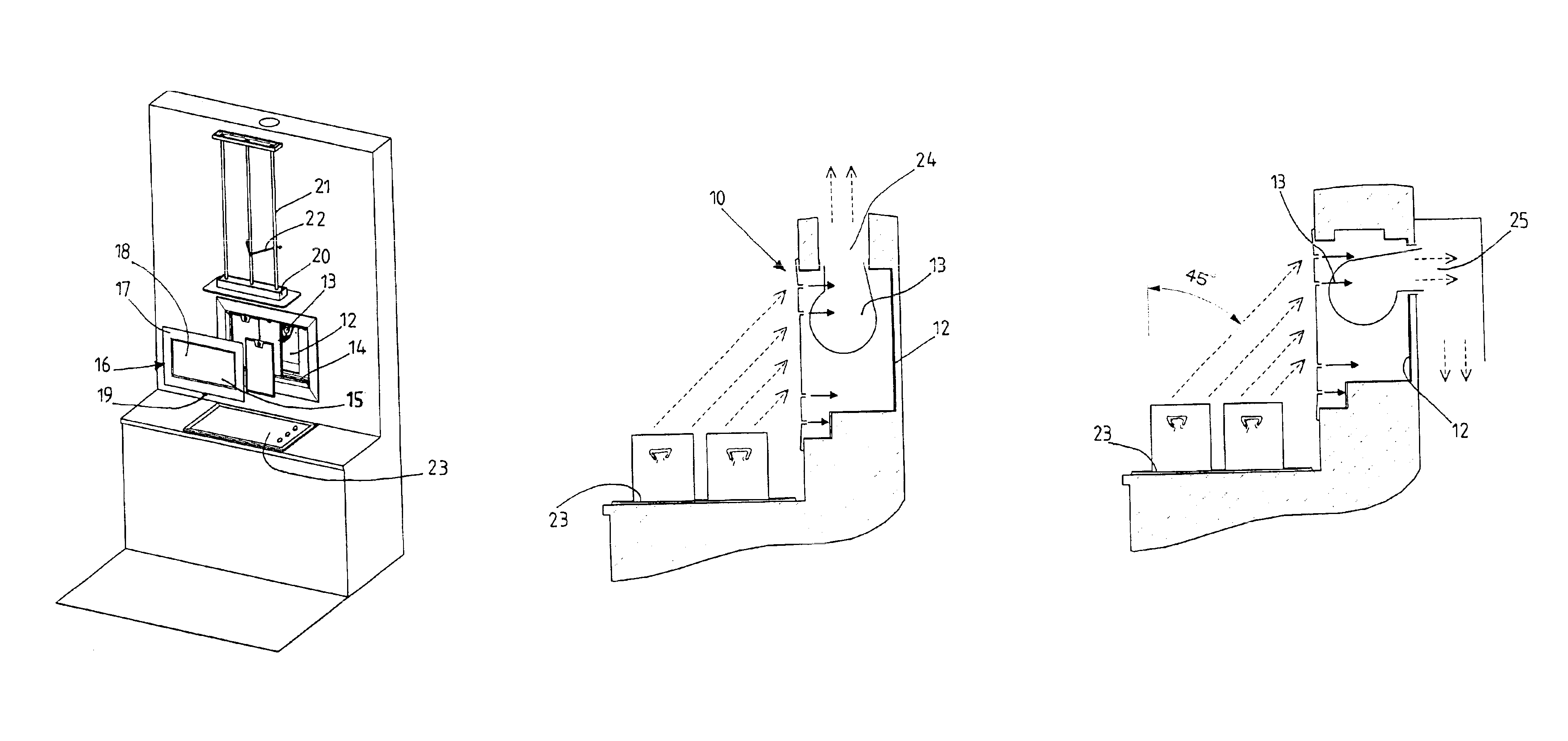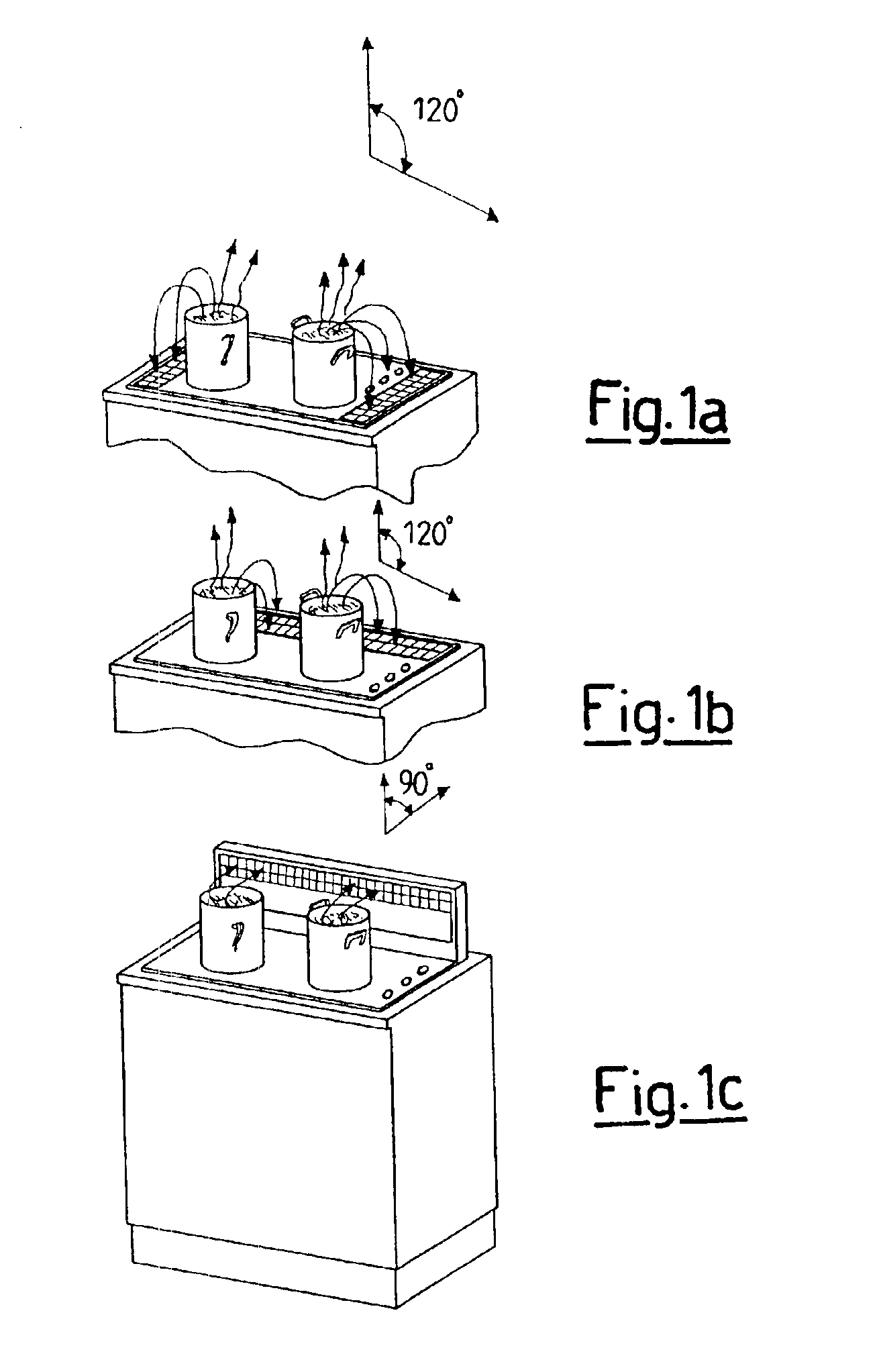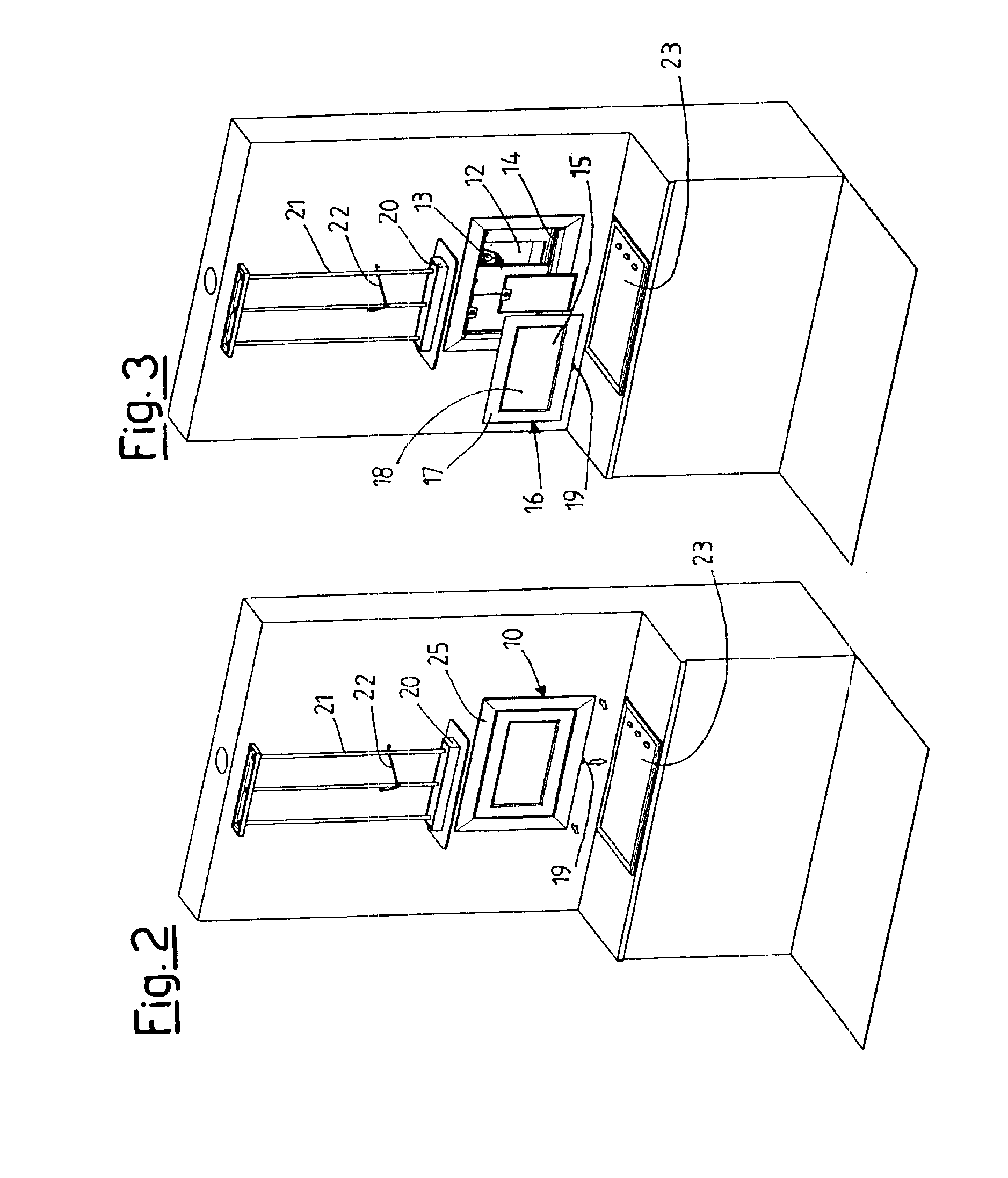Built-in aspirating hood
a built-in, aspirating technology, applied in the field of aspirating hoods, can solve the problems of high evacuation capability, high cost, and ineffective use of free cooking surfaces, and achieve the effect of maximum ergonomics in the use of cooking zones
- Summary
- Abstract
- Description
- Claims
- Application Information
AI Technical Summary
Benefits of technology
Problems solved by technology
Method used
Image
Examples
Embodiment Construction
[0016]With reference generically to FIG. 1, an aspirating hood to be built into a wall according to the invention is shown in a totally schematic way, in which the aspirating hood is wholly indicated with 10.
[0017]The built-in aspirating hood 10, which is arranged at a cooking surface 23, consists of a substantially parallelepiped hollow body, preferably made from metal 12, inside of which a centrifugal fan13 is fitted. This fan 13 can be fixed to the body 12 through screws or rapid attachment systems and it usually has the outlet facing upwards, but which can be rotated by 90° to allow an alternative rear outlet. Indeed, the parallelepiped body 12 is equipped with two outlets, one upper 24 and one lower 25, which can alternately be used to evacuate towards the outside the flow of fumes and vapours sucked in by the inner fan 13.
[0018]On the inner perimetric edge of the front face of the parallelepiped body an abutment 14 is formed for one or more anti-fat filters 15, preferably but ...
PUM
 Login to View More
Login to View More Abstract
Description
Claims
Application Information
 Login to View More
Login to View More - R&D
- Intellectual Property
- Life Sciences
- Materials
- Tech Scout
- Unparalleled Data Quality
- Higher Quality Content
- 60% Fewer Hallucinations
Browse by: Latest US Patents, China's latest patents, Technical Efficacy Thesaurus, Application Domain, Technology Topic, Popular Technical Reports.
© 2025 PatSnap. All rights reserved.Legal|Privacy policy|Modern Slavery Act Transparency Statement|Sitemap|About US| Contact US: help@patsnap.com



